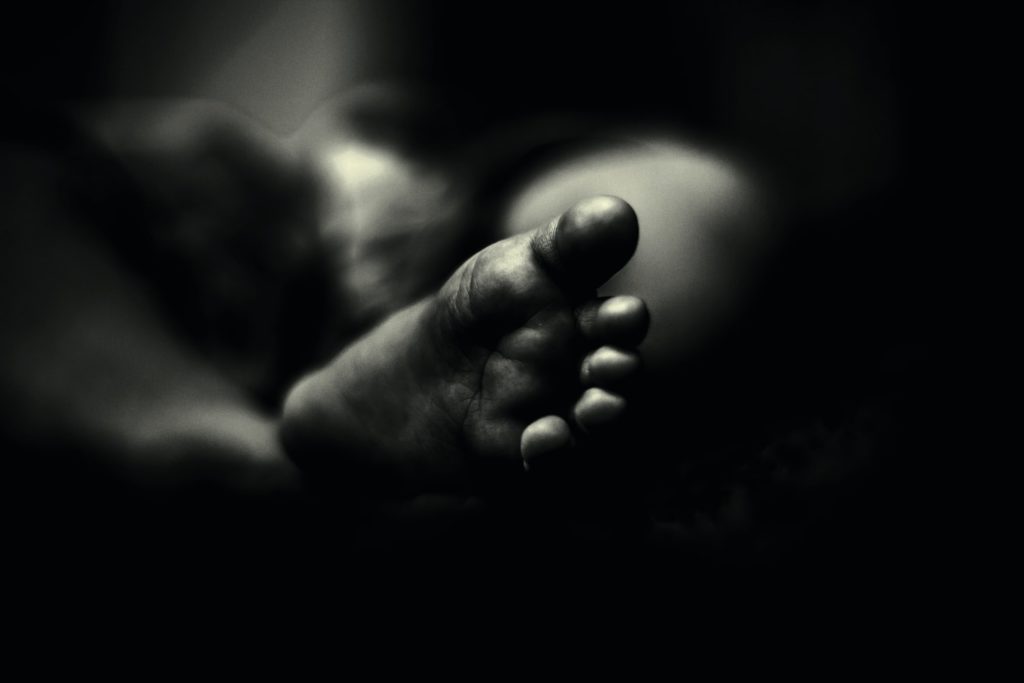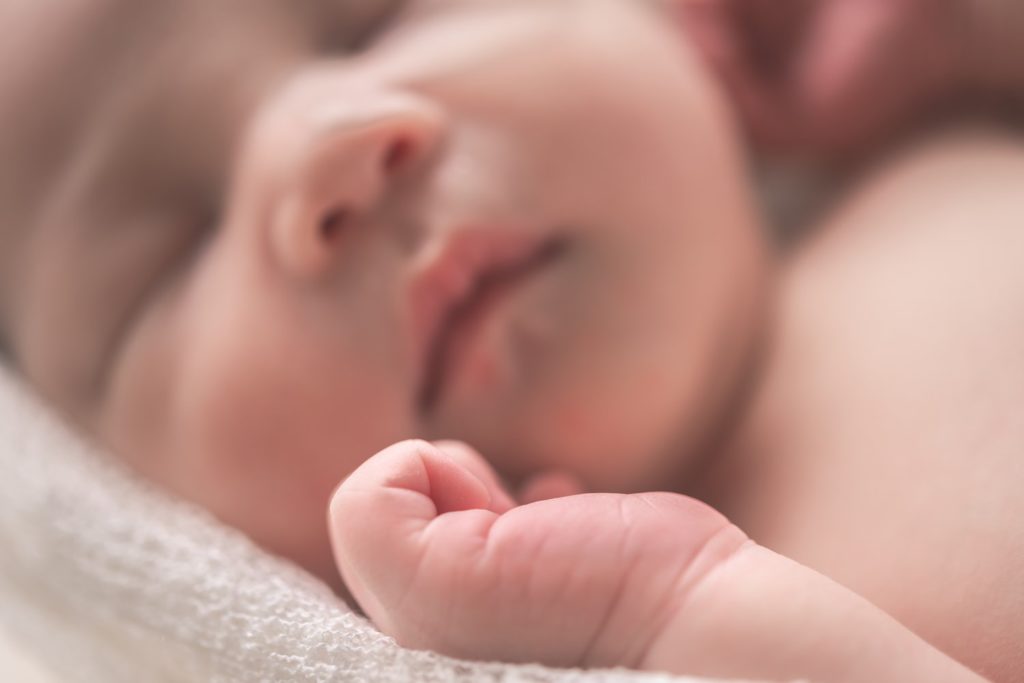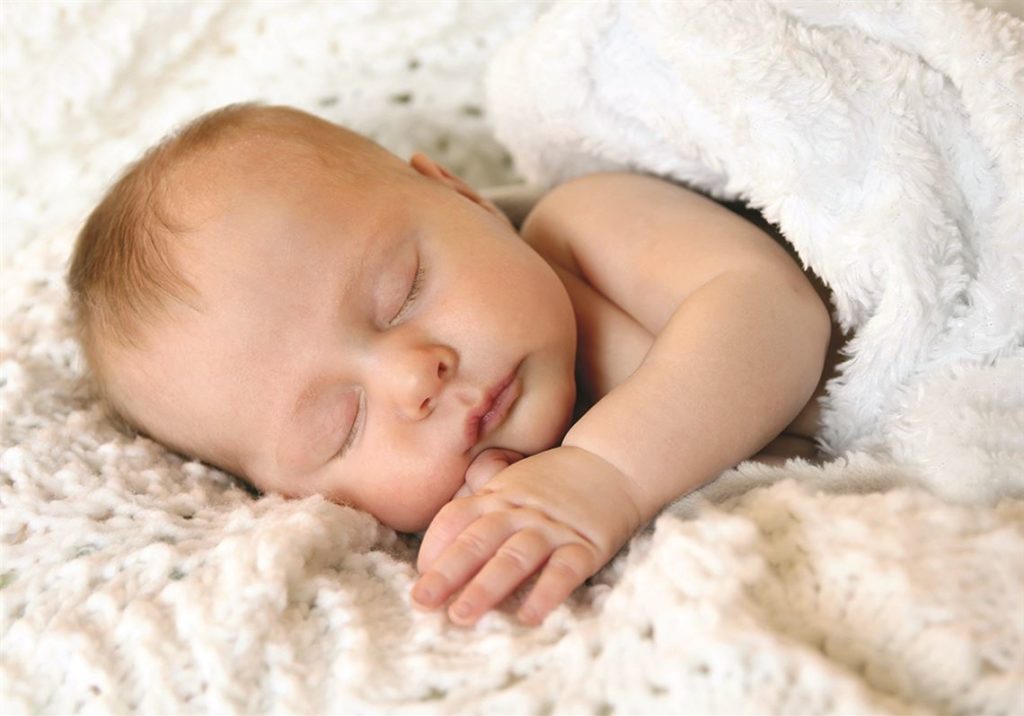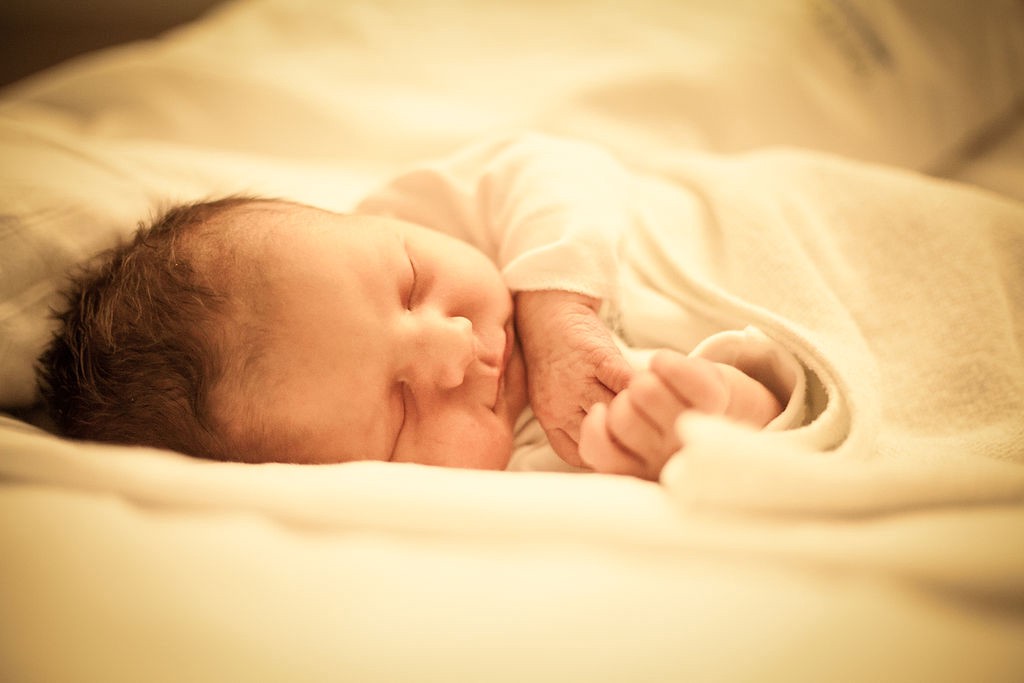
Do you think you already know everything about children and their upbringing? Learn some surprising facts that you may not have heard of yet.
- Parents of babies lose about 50 days of sleep during the first year of their babies’ life! Most young mums and dads can afford a maximum of 4 hours of uninterrupted sleep at night. They spend the rest of their time calming, putting to sleep, or feeding their baby. However, lack of sleep in young parents has negative effects, such as deterioration of mood, depression, anger, and trouble in marriage. It can also cause health problems, because without sufficient regeneration during the night, the body loses its natural defenses against viruses and bacteria.
- From birth to potty training, the average child uses around 8,000 diapers. Interestingly, men take less time to change diapers than women. The average rewind time for fathers is 1 minute and 36 seconds, and in the case of I have 2 minutes and 5 seconds. Where did these discrepancies come from? Are the gentlemen made to change or are they not doing it as thoroughly as women?
- Did you know that newborns do not cry? Yes, they do scream (and scream), but they do not shed a single tear. Why? This is due to anatomy – until about three weeks of age, the human body does not produce tears. Babies, however, quickly make up for lost time, and their crying becomes an integral part of every day in the lives of young parents.
- A newborn baby can only see black, white, and gray, and its eyesight is about 15-30 cm. This explains why an infant stares so hard at its parents when they hug it or lean over it. The child notices the full range of colors from around 3 months of age.
- The chance of giving birth to twins has increased by 76% in the last 30 years! Where did such a jump come from? The likelihood of having twins increases with the age of the woman. Very often, twins give birth to women after IVF, which is becoming an increasingly common method around the world. Doctors explain that a greater number of twins may also be the result of the extensive use of hormonal contraception. Women in the first month after discontinuation of pills have multiple pregnancies much more often than those who have not used pharmacological contraception.

- If a woman is injured in an organ during pregnancy, the fetus donates its cells to repair the damage. This fact is confirmed by many cases of women with heart defects, whose condition improved significantly during pregnancy or just after giving birth.
- The mother’s voice is especially important to the baby during pregnancy. The developing toddler recognizes the tone of his mother’s voice and can easily identify his mother after birth. This is the most important sound for a baby, the sound of which he will remember for his whole life.
- Until about 7 months, the baby can breathe and swallow at the same time. Nothing special? Then try to do it!
- They change eye color. If they are not meant to be blue, they will start to change around month 6.
- Babies have more bones than adults. They are born with 270 bones and adults have 206 bones. How is this possible? Some of them fuse together (e.g. skull bones).
- 30,000 taste buds – babies have 3 times more than adults, and they are located not only on the tongue, but also on the palate and the inside of the cheeks.
- An infant with twin siblings is twice as likely to be left-handed as a single child (22% to 10%).

- Babies have a different accent. Even before they can speak, children babble with accents of their mother tongue. It is amazing, but they learn the intonation of their language already in the womb.
- In the first year of life, your baby will triple his starting weight, and everyone will enjoy it. What if we tried that?
- For the first 4 months of life, babies do not taste salt. Most likely, it is related to the development of kidney function, which only then begins to excrete sodium.
- Human infants are the only primates to smile at their parents.
- An infant uses an average of 2.7 thousand. diapers in the first year of life
- Only 15% of newborns prefer to turn their head left when lying on their back. It seems to be related to a gene, like having dimples. This bias lasts for a few months, and it may help explain why more people are right-handed, too
- “Stork bites” or “angel kisses” (a pink or red area often on the forehead, eyelids, bridge of the nose, or back of the neck) and Mongolian spots (flat, bluish patches that look like ink stains on the back or bottom) usually fade within a few years.
- A bright red raised “strawberry” hemangioma comes from fast-growing blood vessels. These birthmarks appear over several weeks and can take years to go away.
- Babies are born with the ability to swim
- Newborn babies can only see clearly about 20cm to 30cm (8in to 12in) in front of their faces. Everything else is a blur of light, shape, and movement. Fortunately, this is the perfect distance for your baby to gaze into your eyes as you feed her!

- A baby’s eyes are 75% of their adult size, but its vision is around 20/400. By six months, a baby’s vision should reach 20/20.
- Newborns are more likely to turn their head to the right than to the left.
- The inner ear is the only sense organ to develop fully before birth. It reaches its adult size by the middle of pregnancy.
- Within a few days of birth, a baby can distinguish between the touch of bristles that are of different diameters.
- At birth, babies have no kneecaps. Kneecaps do not develop completely until after six months.
- Adults have 206 bones. When babies are born, they have 300. Their bones fuse as they grow, resulting in fewer bones as adults.
- The intestines of a newborn are about 11 feet long. The length will double by the time the baby grows to adulthood.
- A newborn urinates about every 20 minutes and then roughly every hour at 6 months.
- If a person who was born 8 lbs. and 20 in. at birth continued growing at the same rate as he does the first year, by the time he reached 20, he’d be 25 ft. tall and weigh nearly 315 lbs.
- Famous premature babies include Albert Einstein, Isaac Newton, Mark Twain, Stevie Wonder, Johannes Kepler, and Sir Winston Churchill.
- In 1978, the first baby was born in Antarctica: Emilio Marcos Palma.
- Approximately 80% of infants are born with some form of birthmark, usually “stork bites” and “port wine stains.”
- Approximately two or three of every 1,000 children in the United States are born deaf or hard-of-hearing. More lose their hearing later in childhood.

- A baby has around 30,000 taste buds. They are not just on the tongue but also on the sides, back, and roof of the mouth. Adults have about 10,000.
- A baby can recognize the smell and voice of its mother at birth. It takes a few weeks before a baby can see the difference between its mother and other adults.
- A baby’s first social smile appears between four and six weeks after birth.
- The heaviest baby on record to survive was a 22 lb. 8 oz. Italian baby born in 1955. In 1879, a woman in Canada gave birth to a 23 lb. 1.92 oz. baby that died 11 hours after birth.
- In the United States, more babies are born on Wednesday than on other days of the week. Sunday is the slowest day.
- In the United States, more babies are born in late summer and early fall than in other times of the year. February tends to be the month when the least babies are born.
- Utah has the highest birthrate in the U.S., at about 21 babies per 1,000 people. Vermont has the lowest birth rate, with slightly more than 10 babies born per 1,000 people.
- In 1970, the average age for a first-time mom in the U.S. was 21. In 2008, it was 25.1.
- It is estimated that new parents in the U.S. will spend on average $7,000 the first year on a new baby’s diapers, formula, and day care. This does not include medical costs.
- Babies born in May usually weigh on average 200 grams more than babies born in other months.
- The number of babies born to single women is at record levels. In 2010, there were 9.8 million single moms living with children under 18 in the U.S., up from 3.4 million in 1970.
- There were about 1,049 male babies born for every 1,000 female babies in 2006 in the United States. This ratio has been consistent for the past 60 years.
- In 2006, there were 32.1 pairs of twins born for every 1,000 births in the United States. This rate has remained roughly the same, though between 1980 and 2004, the rate rose 70%.

- Over half a million babies (1 in 8) are born prematurely in the United States each year. Low birth weight rate has increased 9% since 2000 and 24% since the mid-1980s.
- Research has shown that cesarean babies are more likely to have breathing difficulties, as it is thought they may miss out on important hormonal and physiological changes that occur during labor.
- The protein that keeps a baby’s skull from fusing is called “noggin.”
- A baby’s skull does not fuse until around age 2.
- A baby’s head is proportionally huge, being one-quarter of the total body length, compared to only one-eighth of the total adult’s length.
- The grasp of a newborn baby is so strong that its whole body can hang in midair, with its bent fingers supporting its weight.
- At the moment of birth, a baby’s heart beats at 180 pulses per minute. Within a few hours, the rate falls to 140 pulses. At 1 year old, the infant heart rate is 115 beats per minute. An adult’s average resting level is 70-80 beats a minute.
- Research shows that a baby responds positively to the fragrance of its mother’s breasts and ignores breast pads used by other women. Even more striking is the discovery that a blindfolded woman can identify her own child from a host of other babies by scent alone.
- New babies prefer looking at a drawing of a face rather than a random pattern, and they prefer smiling faces to grumpy ones.
- Up until 7 months old, a baby can breathe and swallow at the same time.
- On average, female babies spend a day longer in the womb than male babies. White babies, on average, spend five days longer inside their mothers than black babies, while Indian babies spend six days longer in the womb than white babies.
- The chances of giving birth to twins are especially high in certain parts of West Africa. In Nigeria, for example, the odds are 22-1. Conversely, women in Japan are less likely to have twins, with the odds as high as 200-1.
- A baby is born in the world every three seconds.
- Around 353,000 babies are born every day
- The average weight of a baby at birth is 7-8 lbs. The smallest baby ever to survive weighed only 8.5 oz. at birth.

- Overall, boy babies are slightly heavier than girl babies. The average weight of a newborn boy is 7 lbs. 10 oz. while that of a newborn girl is 7 lbs. 2 oz.
- The brain of a newborn accounts for 10% of its total body weight. In adults this figure is down to 2%. By the end of the first year, an infant’s brain increases in size two and half times, and by the end of the fifth year, it is three times what it was at birth. At all stages, the male brain is slightly larger than that of the female.
- Babies are born with natural swimming abilities and can hold their breath. However, this ability quickly disappears.
- At around 6 months old, a baby learns that each object is unique. Before this time, whenever it sees a bird in a tree, it always assumes it was the same bird.
- Eyesight is the least developed of all the newborn senses. Newborns can see best at a distance of only 8-14 inches, and until they are about three months old, they see best in their peripheral vision. Babies may also have difficulty distinguishing color tones.
- During the nine months between conception and birth, a baby’s weight increases by 3,000 million times. Between birth and the end of its second year, an infant will have quadrupled in size.
- The first 3 months of growth are especially important
- Most newborns will lose all the hair they are born with in the first three or four months of life.
- Newborns prefer the cadence of their native language at birth, suggesting that some language learning starts in utero. Research suggests that babies may even cry with the intonations of their mother tongue.

- Babies all over the world have been adorned with necklaces, anklets, and amulets to ward off the Evil Eye. Some ornamental infant wear included odd numbers, (which were thought to have protective powers), crescent shapes, five-point stars, amber, red beads, tiger images, and coral.
- In European and American societies, coral was often used as a teething aid or in rattles for babies, but its real function was to act as a protective element in the battle against evil. It was used specifically for first-born sons. Known since ancient times, the Greeks believed coral had grown from the blood of the Gorgon, Medusa.
- In China, a baby is born with a birth defect every 30 seconds. Birth defects in that country have increased nearly 40% since 2001.
- One of the first foundling hospitals to be recorded was established by Datheus, Archbishop of Milan in A.D. 787. His intention was to help parents avoid eternal damnation in killing their children by bringing them to a hospital.
- In Europe, milk was not pasteurized until the 1890s and was avoided, particularly for infants, because people believed their child would grow up to resemble the animal.
- The Greeks thought that mother’s milk was produced in the uterus and transported to the breast by special vessels in the body. There existed since the Middle Ages a vague awareness that breast milk provided some protection against sickness—but colostrum, the fluid secreted after birth, was considered dangerous, and women were advised not to feed the newborn baby for a few days. An older child would draw the breast milk first.

- The term “infant” is from the Latin infans, meaning “unable to speak” and typically refers to the ages from 1-12 months. A “newborn” usually refers to an infant in the first 28 days of life.
- Up until the 7th century, doctors believed many infant sicknesses were caused by the presence of too much acid in the stomach. Babies were fed chalk, crushed eggshells, coral, and oyster shells mixed with their gruel to counteract the acidity.
- Until the 19th century, babies were not considered to have personalities and, therefore, were not in need of the physical and psychological nurturing advised today.
- Redheaded wet nurses were avoided because at least until the 19th century, it was thought that babies absorbed the characteristics of the person nursing them. Parents wanted to avoid the legendary tempers of redheads.
- In 1235, Henry III decreed that Christian wet nurses could not nurse Jewish babies.
- Depending on family economics, in the 18th century, babies were fed a kind of gruel made of flour and water. Known as “pap,” “panda,” or “caudle,” it was a breeding ground for bacteria and most closely resembled wallpaper paste.
- Spoons were often used to feed infants and were known as “pap boats.” Expensive and elaborate versions were available to those who could afford it. The expression “born with a silver spoon in one’s mouth” probably evolved around the 16th century.
- In Europe and America in the 18th century, it was tradition to wash a newborn and then scour it with salt. It would be purged of meconium with emetic syrup, oil of almonds, castor oil, or anything else the midwife had, including wine and whisky.

- In parts of England, a newborn’s head was washed in rum for luck. It was common all over Europe to give the infant a dab of butter and a little sugar to signify the hoped-for riches that the child would have in the future.
- Traditionally the caul, which sometimes covered the head of an infant, was highly treasured and credited with magical powers.
- An average baby will go through approximately 2,700 diapers a year.
- Disposable diapers take over 500 years to decompose
- In Ancient Rome, an olive branch would be hung from the front door of a house if a boy were born, and a strip of woolen fabric was hung if the child was a girl. Eighteenth-century London houses hung strips of ribbon on their doorknockers: pink for a girl and blue for a boy.
- Babies typically prefer a female voice over a male voice, which may explain why people raise the pitch of their voice when talking to babies, otherwise known as “motherese.”
- Meconium, or the greenish-black sticky material in the baby’s digestive track, stands in for fecal material and allows the intestine to develop so it can digest milk immediately after birth.
- The philosopher John Lock argued in An Essay Concerning Human Understanding that a baby is born with a “blank slate” or a tabula rasa. This contrasts with the beliefs of Plato and the medieval church, both of whom believed babies were born with innate inequalities.
- Psychologists believe that a baby’s self-awareness develops around 12 months old.
- Object permanence is usually understood at 8-9 months of age.
- In the late 19th century, it was medically accepted in Europe and America that “infants who persisted in the habit of sucking always become masturbators.” Not only were pacifiers considered unhealthy, but parents were also instructed to tie their children’s hands to their cribs or to stuff their hands inside aluminum mittens.

- Babies in medieval Europe were often tightly swaddled in linen strips because it was thought that swaddling would help its arms and legs grow straight. It also served to immobilize the baby.
- The infant mortality in medieval Europe was as high as 30-50%.
- A newborn baby has about one cup of blood in its body.
- An adult has between 1.2 and 1.5 gallons of blood
- To many Victorians, the sight of crawling infants reminded them of their ape-like origins, and they forced their children to learn to walk early with the aid of cages and walkers.
- After birth, the human brain more than doubles to reach 60% of its adult size by the time a baby is 1 year old. By kindergarten, the brain has reached its full size, but it typically does not finish developing until the child is in its mid-20s.
- The word “baby” may come from a baby’s babbling, as in “ba-ba-ba-ba.”
- Research indicates that a baby’s name influences a baby’s life into adulthood. For example, a newborn boy with a more “feminine” name could lead to behavioral problems in life.
- Children do not remember much before the age of 3, due to what psychologist’s call “infantile amnesia.” Neuroscientists believe that early experiences never make it into long-term memory banks because the brain’s recording machinery is not functional yet or because memory is tied to language acquisition.
- A baby will eat an estimated 15 pounds of cereal per year.
- Babies are born without kneecaps. Yes, you read that right. Babies have a structure of cartilage that resembles the kneecaps. These cartilages do not develop until they are fully six months.
- Babies have around 70 reflexes, which are primitive and down to evolution
- Babies are capable of their first smile only when they are a month old.
- Baby stomach is in the size of a hazelnut
- Only about 7 months, babies will start responding to their given name.
- There are about 4 million babies born each year, here in America. Its sounds like a lot, but in fact is an over 2% drop compare to previous years.
- A woman give birth to 69 children, in her lifetime, between 1725 to 1765. The peasant woman in Russia, had 16 set of twins, 7 sets of triplets, and 4 sets of quadruplets.
- 80% of infants are born with birthmarks. So called the stork bites or port stains, usually quickly disappear.
- The heaviest baby, that was born, weighted whooping 22 pounds.
- In the United States, for every 1049 male newborns, there are 1000 female newborns. According to world statistics, this ratio has been constant for the past 60 years.
- The heart of newborn beats 180bpm. Within its next few hours of life, it slows down to 140 bpm. Once the baby has reached its first year of age, it will go down to 115 bpm. The heart rate in adults on average is 70-80 bpm.

- Newborn babies have amazingly strong grip.
- In Nigeria, the odds of giving birth to a set of twins is a 1 in 22 chance. However, in Japan, the odds for the birth of twins are low with the ratio measuring 1:200.
- New babies have instinctive reactions to temperatures. If they get too hot, they will stretch their arms and legs out. If they get too cold, they will move around more to warm themselves up.
- From birth to being potty trained, a child goes through roughly 8000 diaper changes
- A newborn baby has about one cup of blood in its entire body, at the time, the baby is born.




